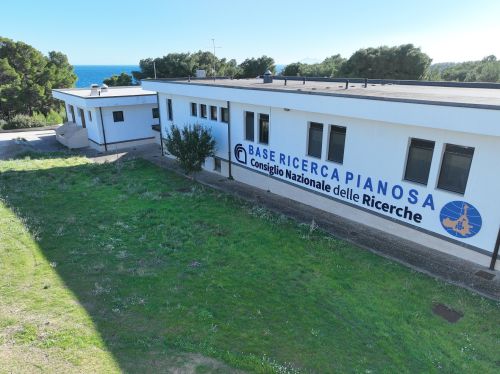Legambiente and the National Research Council (CNR) – through its ISMAR, IGG, and IBE institutes – have signed an important three-year operational agreement to jointly develop scientific research, environmental education, and biodiversity conservation activities on the island of Pianosa, in the heart of the Tuscan Archipelago National Park, where the organization has its own research infrastructure.
This strategic agreement combines the scientific expertise of three CNR institutes of excellence with Legambiente’s more than 40 years of experience in environmental protection and European project management. The goal is ambitious but concrete: to strengthen the network of knowledge about the fragile island ecosystem of Pianosa, promote conservation actions, in particular for the nesting of the Caretta caretta sea turtle, and make the island an open-air laboratory for sustainability, training, and dissemination.
“With this collaboration,” says Brunella Raco, scientific director of the CNR Research Base in Pianosa, “we are combining the scientific resources of three CNR institutes with Legambiente’s expertise in the field. Pianosa, thanks also to the presence of our Research Base (BRP-CNR), represents a unique context for studying the impact of climate change on island and marine ecosystems and for experimenting with sustainable solutions. The agreement also allows us to strengthen the educational and public engagement dimension of our activities, opening up research to society.”
The protocol provides for coordinated activities on several fronts: climate monitoring, the production of shared scientific reports, educational activities for students and local communities, summer schools, workshops, and projects for the protection of habitats and protected species. Support for field research is also central, with Legambiente’s regulated access to the BRP-CNR, a logistical and scientific facility that will be promoted as a hub of excellence for multidisciplinary research.
One of the most innovative aspects of the agreement is the strong investment in citizen science, or participatory science. Volunteers identified by Legambiente will be actively involved in data collection, ecosystem monitoring, and beach surveillance to identify Caretta caretta nests and monitor other species such as the lesser shearwater and the monk seal. This strategy transforms awareness into concrete action and allows science to benefit from collective intelligence and constant monitoring of the territories. Pianosa will thus become a laboratory where scientific research is intertwined with civic engagement.
“This protocol represents a fundamental step in our commitment to protecting marine biodiversity,” says Stefano Di Marco, Project Office Coordinator at Legambiente and Project Manager of the LIFE Turtlenest project. “We have been working for years to protect Caretta caretta, a species that is a sentinel of climate change. Thanks to this agreement, we will strengthen our actions, integrating monitoring and protection of nests with advanced scientific research. Pianosa will be a permanent laboratory, not only for researchers, but also for volunteers, students, and citizens involved in our campaigns.”
The agreement includes, among its priorities, the development of joint project proposals on a national and international scale, in line with European strategies on biodiversity, climate, and environmental education. This agreement marks the beginning of a concrete alliance between science and civil society.
The synergy between CNR and Legambiente confirms the importance of integrated approaches to research and conservation, capable of combining scientific rigor, participation, and concrete impact on local areas. Pianosa, an island with extraordinary environmental and historical characteristics, is ready to become a replicable model of advanced environmental governance.
Info:
Brunella Raco
Cnr-Igg e responsabile della base di ricerca Cnr di Pianosa,
brunella.raco@cnr.it
CNR-ISMAR
Silvia Merlino
silvia.merlino@sp.ismar.cnr.it


